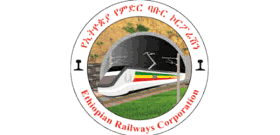 Leading the way in green climate finance for sustainable railways
Leading the way in green climate finance for sustainable railways
As industrialization and trade activities intensify, Ethiopia has seen a significant rise in road freight transportation. From 2011 to 2030, freight transport is projected to grow by over 13% annually, despite high fuel costs. Passenger transport demand is also expected to rise by approximately 9% each year, with overall transport emissions anticipated to surge by 800%, from about 5 MtCO2e in 2010 to 40 MtCO2e in 2030.
To address these challenges, the Ethiopian government established the Ethiopian Railway Corporation in 2007. These railway initiatives were included in Ethiopia’s Nationally Appropriate Mitigation Action (NAMA) submissions to the UNFCCC, with an open call for support. By 2030, Ethiopia aims to have a railway network exceeding 5,000 km, shifting 50% of the projected road freight transport growth to rail. This shift is expected to substantially reduce greenhouse gas (GHG) emissions and offer numerous economic, social, and environmental benefits.
Electric railways have been identified as the sector with the highest mitigation potential, estimated to cut GHG emissions by 8.9 MtCO2e annually by 2030 compared to the business-as-usual scenario. Ethiopia's strategic investments aim to leverage rapid economic growth towards a climate-resilient and low-carbon economy. The Growth and Transformation Plan (GTP) targets middle-income status by 2025, while the Climate-Resilient Green Economy (CRGE) strategy, launched in 2011, aims for a carbon-neutral economy by the same year. An affordable and efficient transport system is vital to this strategy, significantly boosting economic growth, job creation, social welfare, and industrial expansion.
The Ethiopian Railways Corporation has secured green climate finance for its projects from several key sources. The Department for International Development (DFID) funded the development of the climate finance strategy. The UNFCCC and South Korean government provided support for Addis Ababa’s lateral transit-oriented development. Additionally, the African Development Bank and NEPAD financed the Ethiopian-Sudan Railway feasibility studies.
With a population nearing 120 million, the demand for goods and passenger services is rising, making the expansion of a green, efficient railway network essential. The planned 5,000 km network will connect regional hubs, with the Djibouti route already completed. The South Sudan extension is in the financing stage for feasibility studies, while the route from Mojo to Moyale to Lamu port is close to forming a Project Connect Committee (PCC) with the Kenya Railways Corporation in Nairobi, paving the way for climate finance applications.
Climate finance is crucial as railways offer a greener alternative to other transport modes. Routes like Ethio-Sudan and Ethio-Djibouti will be fully electrified, powered by renewable energy. These projects aim to justify climate finance through substantial carbon dioxide reductions.
Guided by Ethiopia’s Green Transformation Plan (GTP), which focuses on renewable energy, rail transport, agriculture, forestry, and building, rail transport is a key investment sector. Integrating renewable energy with rail transport can attract significant climate finance, given Ethiopia's reliance on hydro and wind energy, and growing solar photovoltaic investments through public-private partnerships (PPP).
Ethiopia is also developing Green Logistic Ports, such as the 300-hectare facility near Addis Ababa, to support agro-industrial processing and facilitate rail-based goods transfer, enhancing climate finance viability. The rapid freight increase necessitates shifting from road to electric rail transport along eight routes connecting key economic hubs.
The national railway network promotes economic integration, unity, and cultural exchange. It also holds significant potential for tourism development and emission reduction, setting a model for other African countries' climate strategies.
Countries like India, Brazil, and China have effectively used climate finance by training professionals in environmental and climate finance sectors. Ethiopia plans to adopt this approach, recruiting environmentalists, climatologists, and climate finance experts in the railway sector. This will build local expertise, reduce reliance on external consultants, and save hard currency.
Ethiopia’s national strategy includes eight key railway routes, with projects like the Ethio-Djibouti route completed and others, such as the Lamu project with Kenya Railways, progressing with NEPAD and African Development Bank support. The South Sudan connection is also in the pipeline for feasibility studies.
Technological advancements in rail infrastructure, signalling, communication systems, power supply, and rolling stock will support the NAMA projects. By sourcing finance from various channels, including bilateral climate finance and co-financing from countries like Germany, Belgium, and the UK, Ethiopia aims to shift up to 50% of current road freight transport users to rail.
The 5,000 km network is expected to create 30,000 jobs, significantly benefiting local economies. Emission reductions are projected at 9 million tons of carbon dioxide, aligning with Ethiopia’s Earth Climate Finance strategy, which emphasizes carbon credits and direct payments for emission reductions. This framework seeks support from NAMA, GCF, and other bilateral climate finance sources, underscoring Ethiopia’s commitment to a sustainable and green future.
